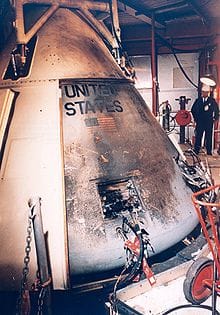The Brin Brothers started putting oxygen into high pressure cylinders in the 1890’s and delivered them to their customers in the West End of London in small packing cases packed with straw, similar as to how you would now deliver a good bottle of wine. Since this time there have been problems with oxygen ignitions and through a combination of trial and error and basic science the industry started to use brass for cylinder valves and other strong non-ferrous materials such as cupro nickel for pipework. Cylinder filling was undertaken using small reciprocating compressors where the piston seals were made from cow hide and lubricated by water injections.
At the end of the 1950’s with the massive worldwide expansion of the steel industry there came a corresponding expansion of the industrial gases industry with plants in the size range 50-150 tonnes per day of oxygen feeding the steel works by pipeline becoming the norm. With this expansion in oxygen supply came an increase in the incidents of oxygen fires and in some cases serious injuries and fatalities. None of the gas companies were immune from this phenomena and all the larger companies set up development programmes to try to identify the best materials and operating conditions to ensure a safe working environment. All this work has been collated in The Safe Use of Oxygen and Oxygen Systems published by the ASTM.
In February 1962 John Glenn became the first man to orbit the planet and was brought back to earth in a Mercury capsule. This capsule is now on display at the Cape Canaveral Museum in Florida; if you look inside you can see, by today’s standards, that the technology is very crude being a mixture of hydraulics and electrical switches. No sign of any solid state technology.
As the race to the moon started NASA commenced the development of the Apollo capsule and one of the things they needed to do was to reduce the weight. John Glenn used breathing air from high pressure cylinders and a target for weight reduction was to use a pure oxygen atmosphere inside the capsule instead of air. During testing of the Apollo 1 capsule, on the launch pad, with a pure oxygen atmosphere a flash fire occurred killing the three astronauts trapped inside. The names of the astronauts were Virgil Grissom, Edward White II and Roger Chaffee.
The subsequent report concluded that although the possibility of an oxygen fire had been considered not all the sources of ignitions had been eliminated. A sparking contact or a pair of hot contacts is more than enough to initiate an oxygen ignition and a subsequent kindling chain.
As a result of this tragedy NASA set up a materials test facility at White Sands in Arizona and developed protocols for fully assessing the suitability of materials for use with oxygen. Much of this information has been shared with the industrial gases industry.
Current levels of knowledge and engineering standards means that most people working in our industry have never seen an oxygen fire but please don’t let complacency creep into your work. We must learn from the tragedy of the Apollo astronauts and understand that
- Oxygen fires can occur in low pressure systems.
- Do not take any unnecessary risks when selecting materials for oxygen use.
For more information, please contact Rob Lee at r.lee@igas-ts.co.uk or T: +44 (0) 1483 268 269







